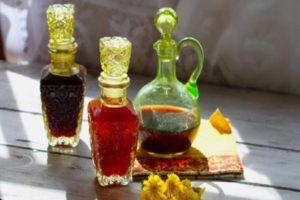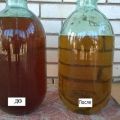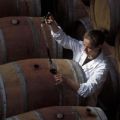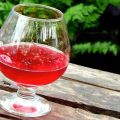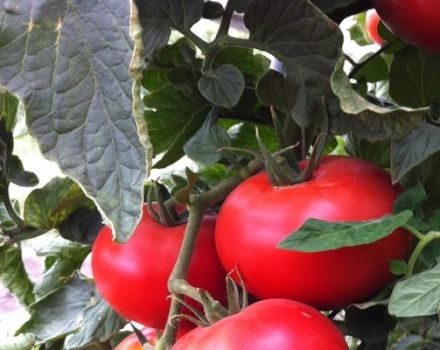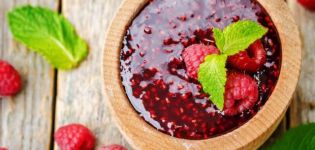How to clarify wine with cold at home, step by step instructions
Making wine at home requires certain skills. Most often, the drink remains cloudy for a long time and you have to wait until it becomes transparent. After all, it will take time for the turbidity from turbid yeast, excess pectin and protein, and salts of tartaric acids to settle to the bottom. You can speed up the process of clarifying wine with cold.
The principle of clarifying wine with cold
Purification or clarification of wine both in industrial production and at home is based on the principle of sticking particles together and precipitating them. Large flakes fall to the bottom most quickly, while small ones continue to float, making the drink cloudy.
By keeping the wine in cool cellars for a long period, they achieve clarification of the drink. But in today's world there is not enough time to wait. Therefore, they use different methods, adding substances to a cloudy drink that can stick together with particles that form turbidity.
Wine stands well in the cold. A drink made from grapes and cherries clears especially quickly. A bottle placed in a cold cellar for 2 weeks will soon delight you with clear alcohol inside. Under the influence of low temperatures, the process of pasting wine takes place. Cold coagulates pectin and protein. The molecules of the substances carry other tiny particles down.
At the same time, do not forget that clarification is carried out on matured alcohol. You can check the readiness of the wine by bringing the bottle into a warm room. The bubbles that appear inside indicate an unripe drink.
Advantages and disadvantages of the method
Wine cooling is chosen in order to accelerate the precipitation of the drink. The advantages of the method include the fact that:
- taste improves;
- aroma intensifies;
- the aging of the drink is accelerated;
- prevent the development of alcohol diseases;
- wine keeps better.
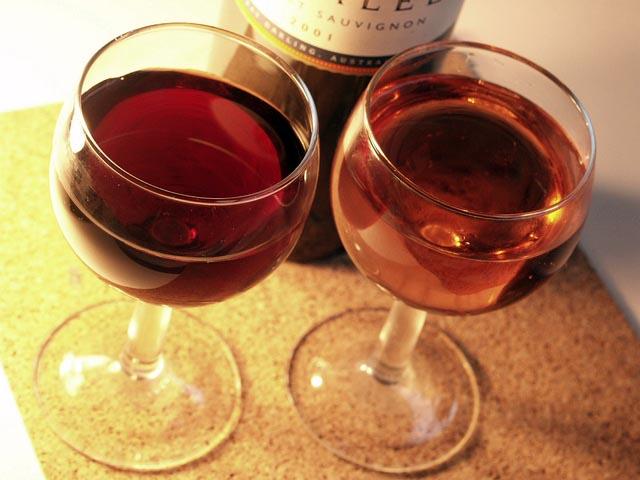
Having received a transparent, bright, aromatic drink after 2-3 weeks, you should be aware of the disadvantages of the method. Possible negative effects of cold clarification. It shouldn't come as a surprise that the drink will have less strength than expected.
It is best to use this method to clarify white wines. In reds, color will deteriorate as a result of a decrease in extractives.
How to clarify wine at home
The cold cleansing procedure is carried out as follows:
- The wine bottle is placed in the freezer or outside. Use a cold cellar for clarification. The cooling temperature should not exceed minus 3-4 degrees. You can put bottles in a double-walled box, lined inside with galvanized iron. The container is filled with snow and salt. To drain melt water, a tube is installed inside.
- Keep for 2-3 weeks. In a box - up to 8-10 days.
- At the end of the procedure, pour the chilled drink carefully so that the sediment remains inside the container.
- The wine should be filtered while it is still warm. After filtration, the quality of alcohol will be high, and the taste will be restored.
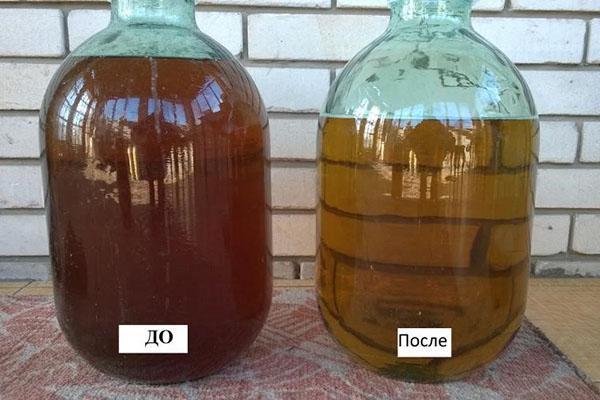
After cleaning, the wine should be poured as quickly as possible so that no air gets inside. It is desirable to carry out filtration at the same temperature as the bottles. After the procedure, the drink is allowed to rest for 20-40 days. Then you can serve wine to the table. Do not forget that the clarification of alcohol, in which there are a lot of tannins, is better and faster, when it is distinguished by a high strength.
Other clarification methods include pasteurization clarification. Alcohol bottles are heated in a water bath, bringing the water temperature to 50 degrees. The procedure should be carried out 2-3 times until the dregs disappear.
Egg white is ideal for cleaning red dessert wines. Gently mix the whipped protein with a teaspoon of cold boiled water. Then it is stirred in a glass of wine and poured into a bottle. The sediment falls within 2-3 weeks. Still, one of the simplest and most affordable methods is the use of cold. The clarification takes place faster, without unnecessary devices and time and effort.
How to avoid mistakes
One of the main mistakes in refining wines is that they are clarified when they are not fermented. This is especially true of the method when egg white, gelatin, milk are added to the drink. You cannot spoil even unfermented wine with cold.
Since a drink in which there are a lot of tannins will clear up faster, tannin can be purchased at the pharmacy and added to alcohol. For this, the substance is dissolved in hot water with the addition of alcohol and poured into a bottle. This will not affect the quality of the wine. Do not freeze wine alcohol, as this creates an unpleasant aftertaste in it. If wines are properly cooled by cooling, filtered after the procedure, then they will remain transparent for a long time.

